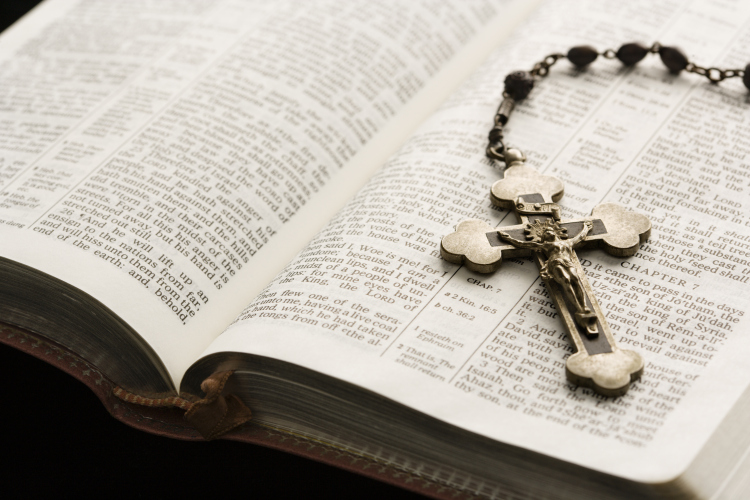How Does a “Searching and Fearless Moral Inventory” Help a Secular Addict?

Let’s face it; while AA and its multifarious 12-Step program offshoots tell us they are not religious, we know with only a discerning eye, as well as a bit of research, that the model—and each and every step—sprang up as a result of one man’s belief in the redemptive power of conversion experiences, specifically the Christian kind. “Bill W.,” or William Griffith Wilson, co-founder of AA, found his own saving grace from alcoholism through the aid of The Oxford Group, a Christian organization founded by an American missionary and Lutheran minister. The Oxford Group, like Wilson’s own grandfather, believed man changed his ways after direct and divine intervention—a moment of insight or vision of clarity brought about by God. Wilson wrote that the Oxford Group had inspired his writing of the 12 Steps of AA, and no one else.
For the countless thousands of people around the world who have found help and safe harbor through group attendance, this early religious influence is of no matter, if it isn’t a directly positive one. The “spiritual but not religious” mantle has become the mantra of the times, and those who suffer from addiction or who love someone who suffers, may take far more away from the groups than they feel could ever be taken from them in the guise of passive religious control. But what about secular addicts and non-believers who suffer and are either forced to attend 12-Step groups (through court order, which still occurs); who must enter treatment and are faced with the 12-Step orientation of rehabilitation centers; or who simply want to give the 12 Steps a chance? And what of certain steps? How can covertly religious steps be read through a secular lens so that an addict finds the help so desperately needed?
The Experience of Confession
When looking at the 12 Steps, most point to steps two and three to assert the influence of religion on the groups’ origins and continued practice—“Came to believe that a power greater than ourselves could restore us to sanity,” “Made a decision to turn our will and our lives over to the care of God as we understood Him,”—but each step has its religious origins. Step four, one of the more difficult but equally rewarding steps for newly recovering addicts, is itself based in the religious precept of the power of confession. Confession has for centuries been an emotionally liberating tool for the spiritually inclined, but can it offer sustenance to the non-believer?
The answer, perhaps surprisingly, is yes. Because, thankfully, there is a rationale behind this particular instrument of sobriety. Addicts tend to be people who live incongruent lives; their stated values rarely match their actions. While they may say they love family and believe in the welfare of children, parents who suffer from addiction time and again find themselves putting their habit before the wellbeing of their kids. They may use in the presence of their children, or spend time that should be devoted to their kids seeking their substance or process of choice. Their words and actions simply don’t line up.
The Moral Inventory is simply a way to show an addict who he is and who he has been. It gives an addict the opportunity to take an unglazed look at all those behaviors addiction has been numbing out the awareness of, and it reminds her who she started out hoping to be. The act of confessing this often deeply embarrassing list of personal failings to another provides an addict with a couple of different positive experiences: one, it shows him that he is really no different than any other addict (since his sponsor, or confessor, is likely to have experienced most of the same items on his inventory); and two, it helps the addict to begin to develop perhaps the most essential ingredient of recovery—true honesty—which doesn’t come without a bit of vulnerability.
Moral Inventory as Moral Defect?
Where secular addicts find themselves confused, or perhaps repelled, by the steps is when this “searching and fearless moral inventory” is used to establish evidence for “moral defects” which are said to have created the addiction. Hold on a minute. Doesn’t the industry tell us that addiction is a disease? And if it is a disease, how can it then also be a moral defect? This thinking is the holdover from a time when addicts and alcoholics were left to live as bums on the streets, or worse, shut away in “inebriate hospitals,” where they might receive cold showers and frontal lobotomies for treatment and where they were housed with prisoners, orphans and other societal castoffs.
Addiction is not a moral defect, but it does have the power to erode a person’s behavior to the point that he may no longer hold to previous moral convictions. And this is a sad aspect of addiction, indeed. It is, in this way, dehumanizing, but it can be healed. The 12 Steps may have a basis in our country’s deeply religious Christian history, and despite some protest, they remain clear beacons of spiritual thought, but they can be used by the secular addict in rational ways in order to begin to integrate the self and heal from addiction. Perhaps the most healing component the 12 Steps have to offer is their non-judgmental, deeply communal tradition, which not many other groups—religious or secular—can claim to possess.
Article Categories
- 12 Steps
- Addiction in the Family
- Addiction Infographics
- Alcohol Addiction
- Articles
- Drug Addictions
- Drug Rehab Center News
- Helpful Articles
- Holidays & Substance Abuse
- Mental Health & Addiction
- Real Life Addiction Stories
- Recovery Testimonials
- Relapse Prevention
- Substance Abuse Prevention
